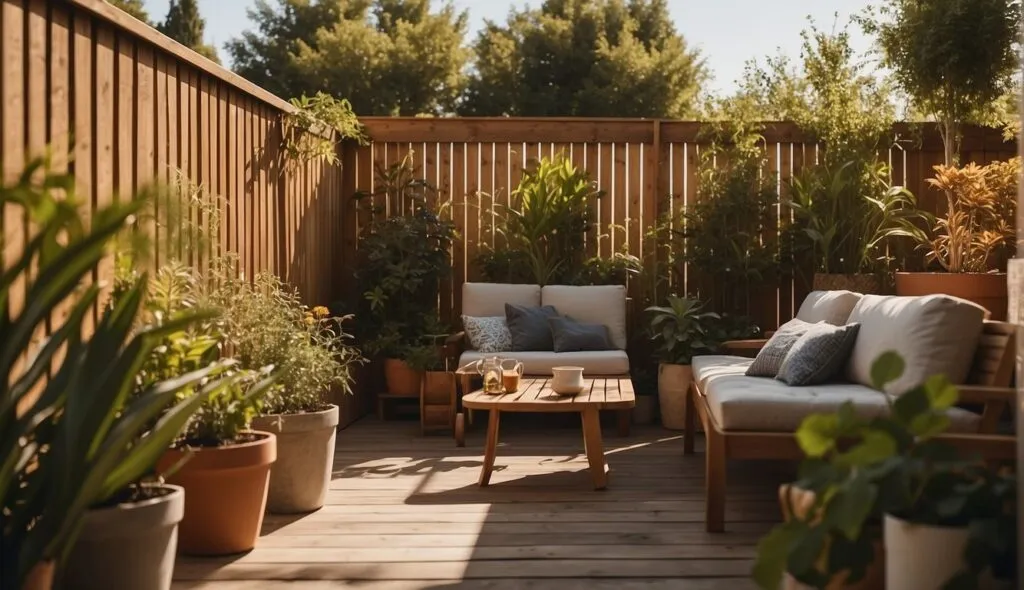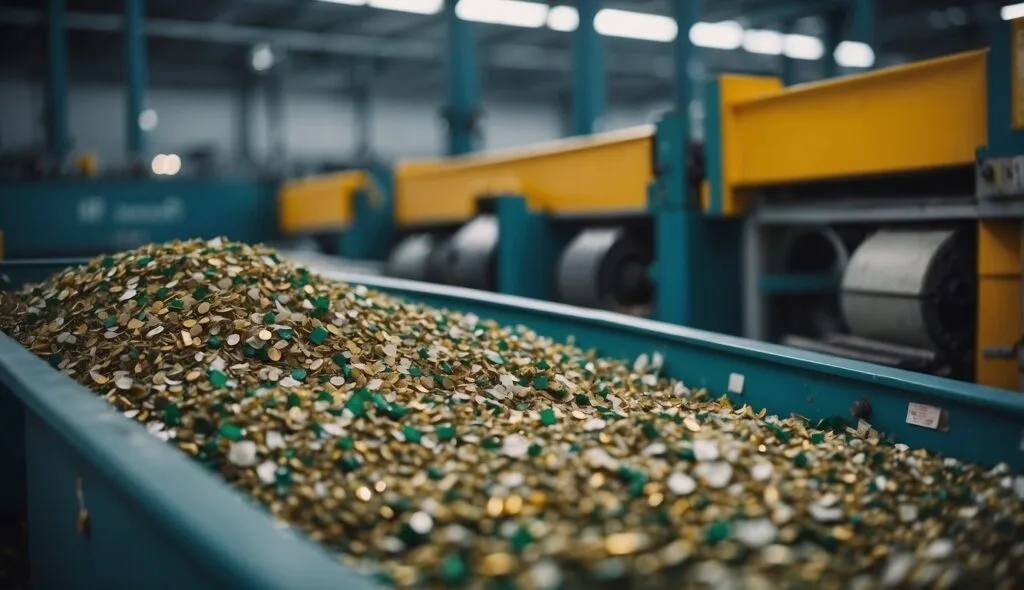When designing an outdoor space, privacy can be a major concern. Whether you are looking to create a secluded retreat or simply block out the view of a nearby eyesore, privacy screens can be an effective solution. However, it is important to consider the environmental impact of your choices. That’s why we are here to introduce you to eco privacy screen varieties that can provide the desired privacy while still being environmentally sustainable.
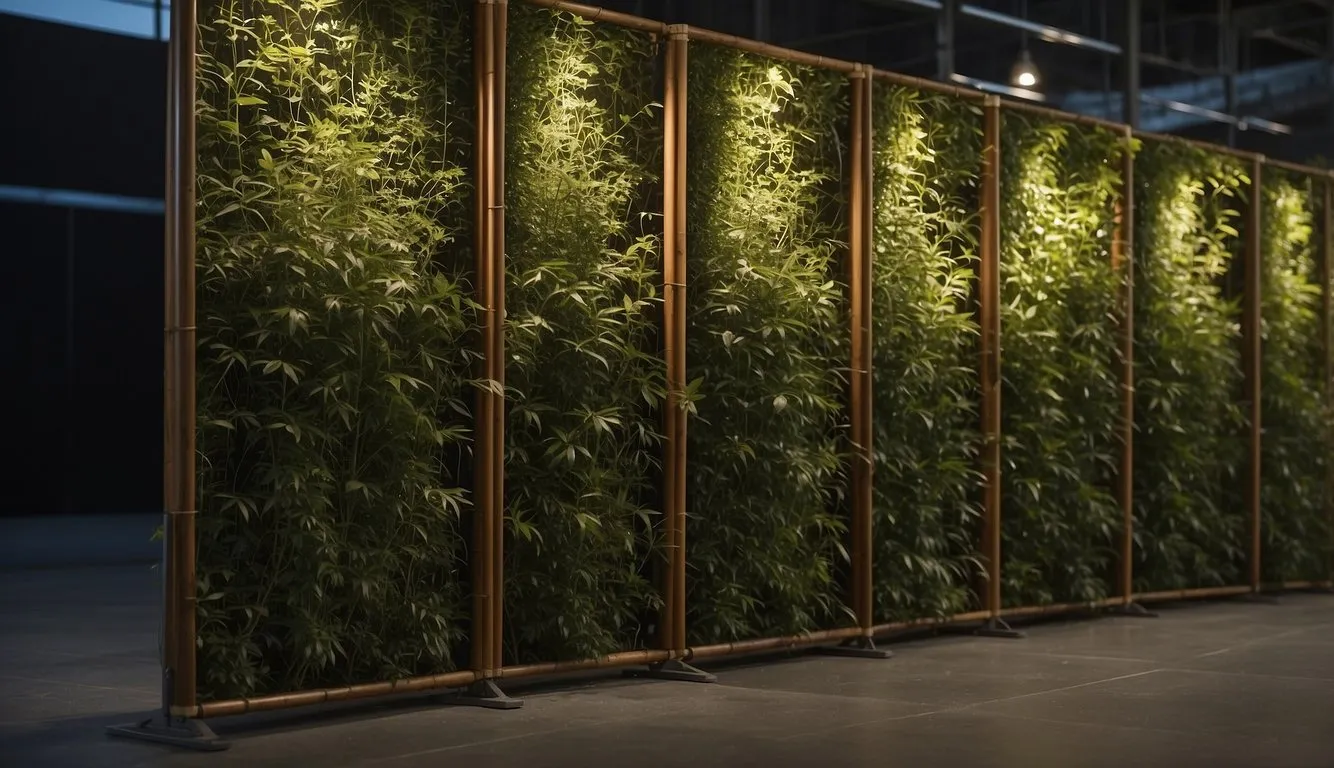
Designing with privacy screens can be a great way to enhance the functionality and aesthetic of your outdoor space. There are many options available, including natural screens made from plants, sustainable materials like bamboo, and upcycled or repurposed materials like old doors or shutters. The key is to find a solution that not only meets your privacy needs but also aligns with your values and priorities.
Table of Contents
Key Takeaways
- Eco privacy screen varieties can provide the desired privacy while still being environmentally sustainable.
- When designing with privacy screens, consider natural screens made from plants, sustainable materials like bamboo, and upcycled or repurposed materials like old doors or shutters.
- Choose a solution that not only meets your privacy needs but also aligns with your values and priorities.
Designing with Privacy Screens
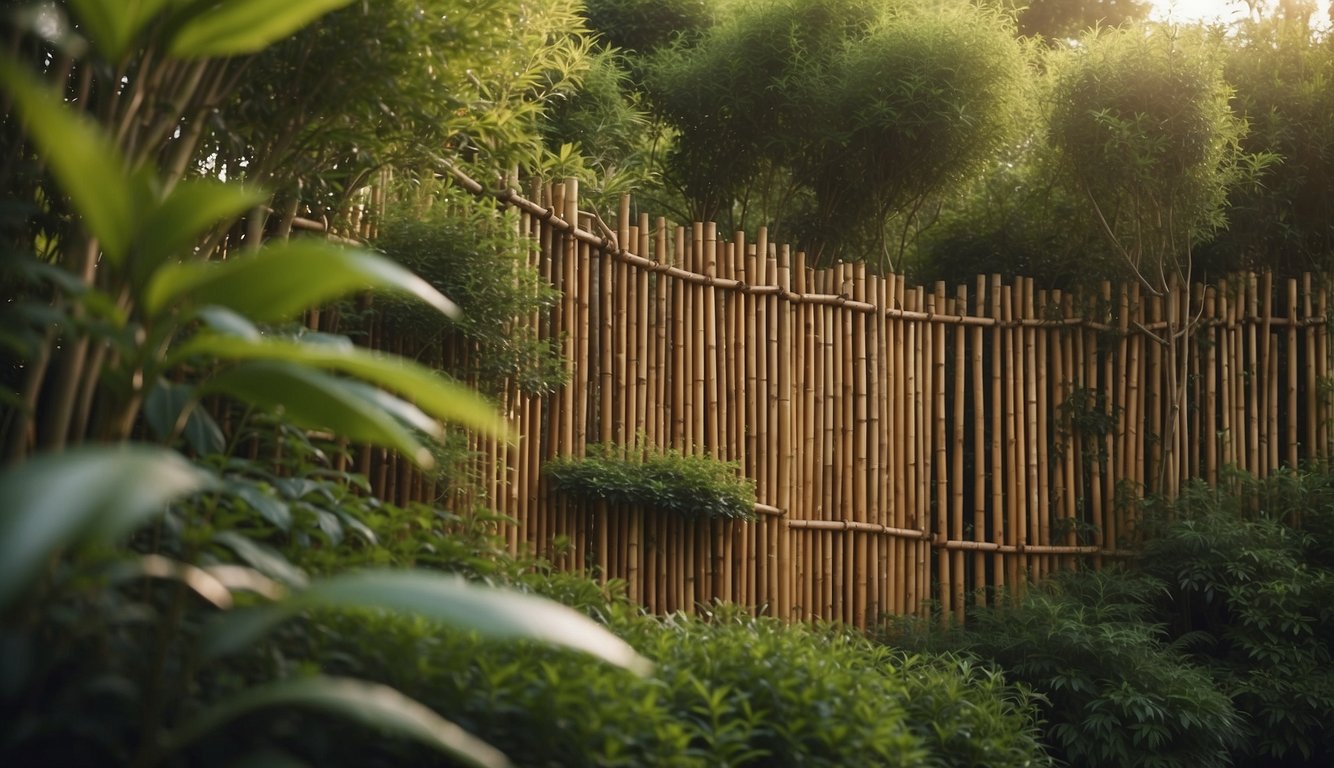
When it comes to creating an outdoor space that feels private and secluded, privacy screens are a must. With so many options available, it can be overwhelming to choose the right one for your needs. At our company, we specialize in designing and installing privacy screens made from a variety of materials, including wood, metal, fabric, recycled plastic, and bamboo.
One of the most popular materials for privacy screens is wood. Wood screens can be made from a variety of woods, including cedar, redwood, and pine. They offer a classic, natural look that can be stained or painted to match your existing outdoor decor. Metal screens are another option and can be made from wrought iron, aluminum, or steel. They offer a modern, industrial look that can be customized to fit your specific design needs.
For those looking for a more eco-friendly option, we recommend using recycled plastic or bamboo. Recycled plastic screens are made from post-consumer waste and are incredibly durable and long-lasting. Bamboo screens are also sustainable and offer a natural, tropical look that can be used to create a living privacy screen with climbing vines or greenery.
In addition to the material, the design of your privacy screen is also important. We offer a variety of designs, including freestanding screens, attached screens, and screens that can be moved around as needed. If you prefer a more natural look, we can also create a living privacy screen using climbing vines, hedges, or fencing.
Overall, when designing with privacy screens, it’s important to consider both the material and the design to create a cohesive and functional outdoor space that meets your needs. At our company, we work closely with our clients to create custom privacy screens that are both beautiful and practical.
Plant Selection for Natural Screens
When it comes to creating natural privacy screens, there are many options to choose from. In this section, we will discuss some key considerations to keep in mind when selecting plants for your screen.
Deciduous vs Evergreen
One of the first decisions you will need to make is whether you want to use deciduous or evergreen plants. Deciduous plants lose their foliage in the fall, while evergreen plants maintain their leaves year-round. Both types of plants have their benefits and drawbacks. Deciduous plants can provide seasonal interest and allow more light to filter through in the winter months. On the other hand, evergreen plants offer year-round privacy and can help block wind and noise.
Choosing the Right Plants for Your Climate
Another important consideration when selecting plants for your privacy screen is your climate. Certain plants thrive in specific climates and soil types, so it’s important to choose plants that are well-suited to your area. Some plants, like arborvitae and boxwood, are cold-hardy and can tolerate harsh winters. Others, like jasmine and privet, prefer warmer climates. Additionally, it’s important to consider factors like sunlight, shade, and wind exposure when selecting plants for your screen.
When choosing plants for your privacy screen, it’s also important to consider their hardiness. The USDA has established hardiness zones based on average minimum winter temperatures. By selecting plants that are appropriate for your zone, you can ensure that they will be able to survive the winter. Some popular evergreen shrubs for privacy screens include Ilex glabra, arborvitae ‘Green Giant’, holly, viburnum, and thuja. Tall grasses can also be a great option for creating a natural screen.
Native plants are another excellent choice for creating a natural privacy screen. These plants are well-suited to the local climate and can provide important habitat for wildlife. Some native plants that work well for privacy screens include berries, evergreen shrubs like Ilex glabra, and conifers like juniper and arborvitae.
Overall, there are many factors to consider when selecting plants for your natural privacy screen. By taking into account your climate, soil type, and other factors, you can choose plants that will thrive and provide the privacy you need.
Sustainability and Environment

When it comes to privacy screens, we believe that sustainability and environmental considerations are of utmost importance. That’s why we recommend using eco-friendly and sustainable materials in the construction of privacy screens.
One way to ensure that your privacy screen is eco-friendly is to use recycled materials. Recycled plastic is a popular choice for privacy screens as it is durable and long-lasting. Additionally, using reclaimed wood for the frame of your privacy screen is a sustainable option that can add a unique and rustic touch to your outdoor space.
Another way to promote sustainability is to choose plants that are native to your region. Native plants require less water and maintenance than non-native plants, making them a more environmentally friendly option. Plus, they can attract local wildlife and promote biodiversity in your yard.
Density is also an important factor to consider when choosing plants for your privacy screen. Dense plants, such as bamboo, can provide excellent privacy while also absorbing carbon dioxide from the atmosphere. This makes them an excellent choice for those who are looking to reduce their carbon footprint.
Overall, we believe that creating an eco-friendly and sustainable lifestyle is essential for the health of our planet. By choosing environmentally friendly materials and plants for our privacy screens, we can help to reduce our impact on the climate and promote a healthier and more sustainable future.
Maintenance and Care

Maintaining your eco privacy screen is crucial to keep it healthy, vibrant, and effective. With proper care, your privacy screen can provide you with years of privacy and protection. Here are some tips to help you maintain your eco privacy screen:
Regular Pruning
Pruning is essential for promoting healthy growth and maintaining the desired height and shape of your privacy screen. We recommend pruning your screen at least once a year, preferably in late winter or early spring before new growth appears. Regular pruning will also help prevent diseases and pests from taking hold.
Watering and Fertilization
Proper watering and fertilization are essential for optimal growth and health. We recommend watering your privacy screen deeply and infrequently, rather than frequently and shallowly. This will encourage the roots to grow deep and strong, making your screen more resilient to drought and other stressors. Fertilize your screen with a slow-release fertilizer in the spring and fall to provide the necessary nutrients for healthy growth.
Low Maintenance Varieties
If you prefer a low maintenance privacy screen, consider planting low maintenance varieties such as Arborvitae ‘Green Giant’, which can grow up to 3 feet per year and requires minimal pruning. Other low maintenance varieties include Leyland Cypress, Thuja Occidentalis, and Emerald Green Arborvitae.
Windbreaks and Screening
Your eco privacy screen can also serve as a windbreak, providing protection from harsh winter winds and reducing your heating costs. To maximize the windbreak effect, plant your screen on the north or northwest side of your property. In addition to providing privacy, your screen can also help block out noise, dust, and other pollutants.
Onlookers
If you have nosy neighbors or live in a high-traffic area, a privacy screen can provide you with the peace and quiet you need. Choose a dense, evergreen variety that will block out onlookers year-round. Some good options include Boxwood, Holly, and Yew.
In summary, proper maintenance and care are essential for a healthy and effective eco privacy screen. Regular pruning, watering, and fertilization, as well as choosing the right low maintenance varieties, can help ensure that your screen provides you with years of privacy, protection, and enjoyment.
Conclusion
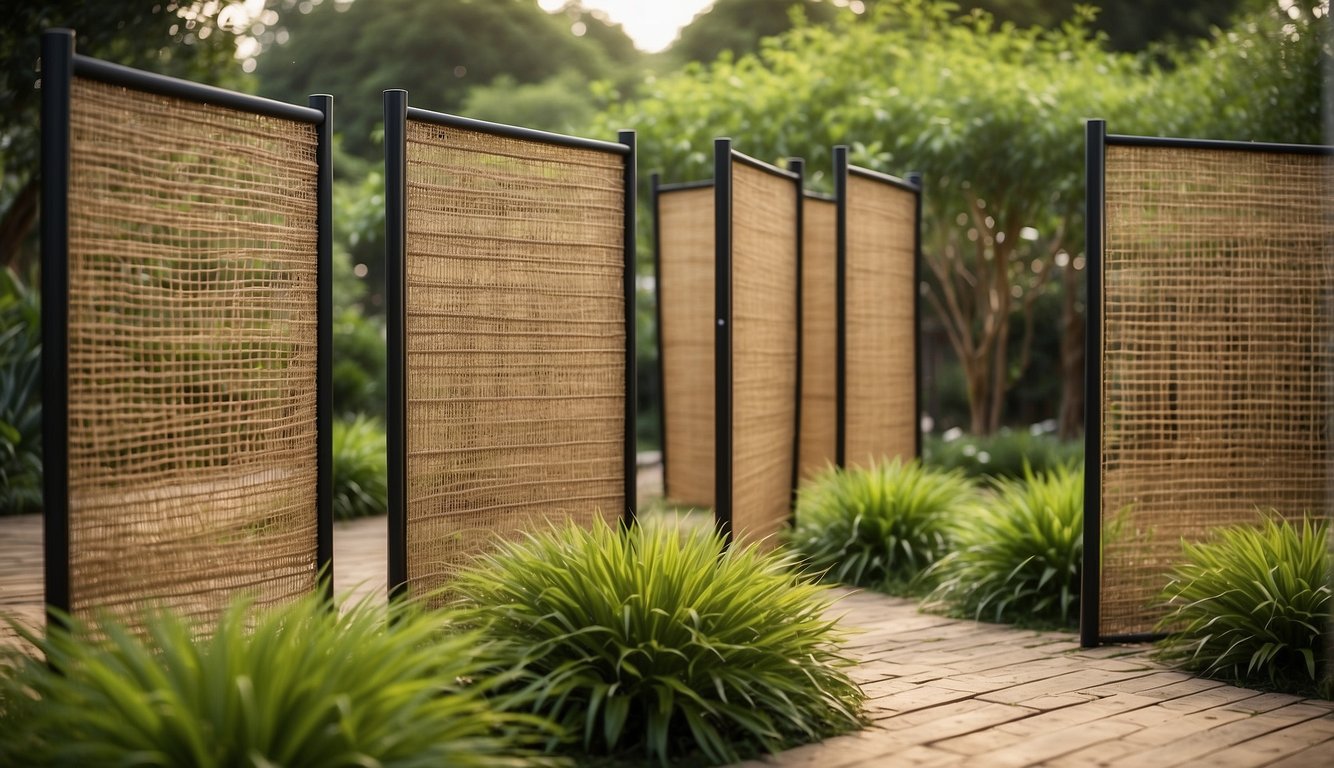
In this article, we have explored different eco-friendly options for creating privacy screens in both outdoor and indoor spaces. We have learned that sustainable living and landscaping can go hand in hand, and that there are many ways to create a private and inviting space while also being mindful of our impact on the environment.
When it comes to outdoor spaces, we have discovered that clumping bamboo can be an excellent option for creating a natural privacy screen. It grows in tight clusters and does not spread aggressively, making it a great choice for those who want a low-maintenance solution. Other options for outdoor privacy screens include evergreens, such as cherry laurel, and flowering plants like bougainvillea. These plants not only provide privacy but also attract pollinators, adding beauty and biodiversity to your backyard or balcony.
For indoor spaces, we have learned that there are many creative ways to create privacy screens using branches, trellises, and other natural materials. Euonymus and other tall, leafy plants can be used to create a living wall that adds privacy and beauty to any room.
Overall, there are many eco-friendly options for creating privacy screens that are both functional and beautiful. By choosing sustainable materials and incorporating plants that attract pollinators, we can create private spaces that are also beneficial to the environment.
Frequently Asked Questions
What are the top materials recommended for durable outdoor privacy screens?
When it comes to durable outdoor privacy screens, we recommend materials that are weather-resistant and can withstand harsh conditions. Some popular options include aluminum, vinyl, and composite materials. These materials are known for their durability and low maintenance requirements, making them ideal for outdoor use.
How can I ensure stability for my freestanding outdoor privacy screen?
Freestanding outdoor privacy screens require stability to ensure they do not tip over or get blown away by strong winds. We recommend using heavy-duty materials for the base, such as concrete or stone. You can also use stakes or anchors to secure the screen to the ground. Additionally, consider the height of the screen and ensure it is proportional to the base to maintain stability.
What are some environmentally friendly privacy screen options for balconies?
For those looking for environmentally friendly privacy screen options for balconies, we recommend using materials such as bamboo, willow, and reed. These materials are sustainable and biodegradable, making them an eco-friendly choice. Another option is to use climbing plants such as jasmine, clematis, and ivy, which not only provide privacy but also add a natural touch to the balcony.
Which privacy screen designs offer the best blend of privacy and airflow?
Privacy screen designs that offer the best blend of privacy and airflow typically have a lattice or slatted design. This allows for some visibility while still providing privacy. Additionally, consider using materials such as bamboo or willow that have natural gaps, allowing for airflow while still providing some privacy.
How do I choose a privacy screen that complements my garden’s aesthetic?
When choosing a privacy screen that complements your garden’s aesthetic, consider the color, texture, and design of the screen. If your garden has a natural, rustic feel, consider using materials such as bamboo or willow. For a more modern look, consider using materials such as aluminum or composite materials. Additionally, consider the color of the screen and choose one that complements the colors in your garden.
What maintenance should be considered when selecting an outdoor privacy screen?
When selecting an outdoor privacy screen, consider the maintenance required to keep it looking its best. Some materials require more maintenance than others, such as wood which needs to be sealed and stained regularly. Other materials such as aluminum and vinyl require minimal maintenance. Additionally, consider the location of the screen and choose materials that are resistant to weather and pests to minimize maintenance requirements.

